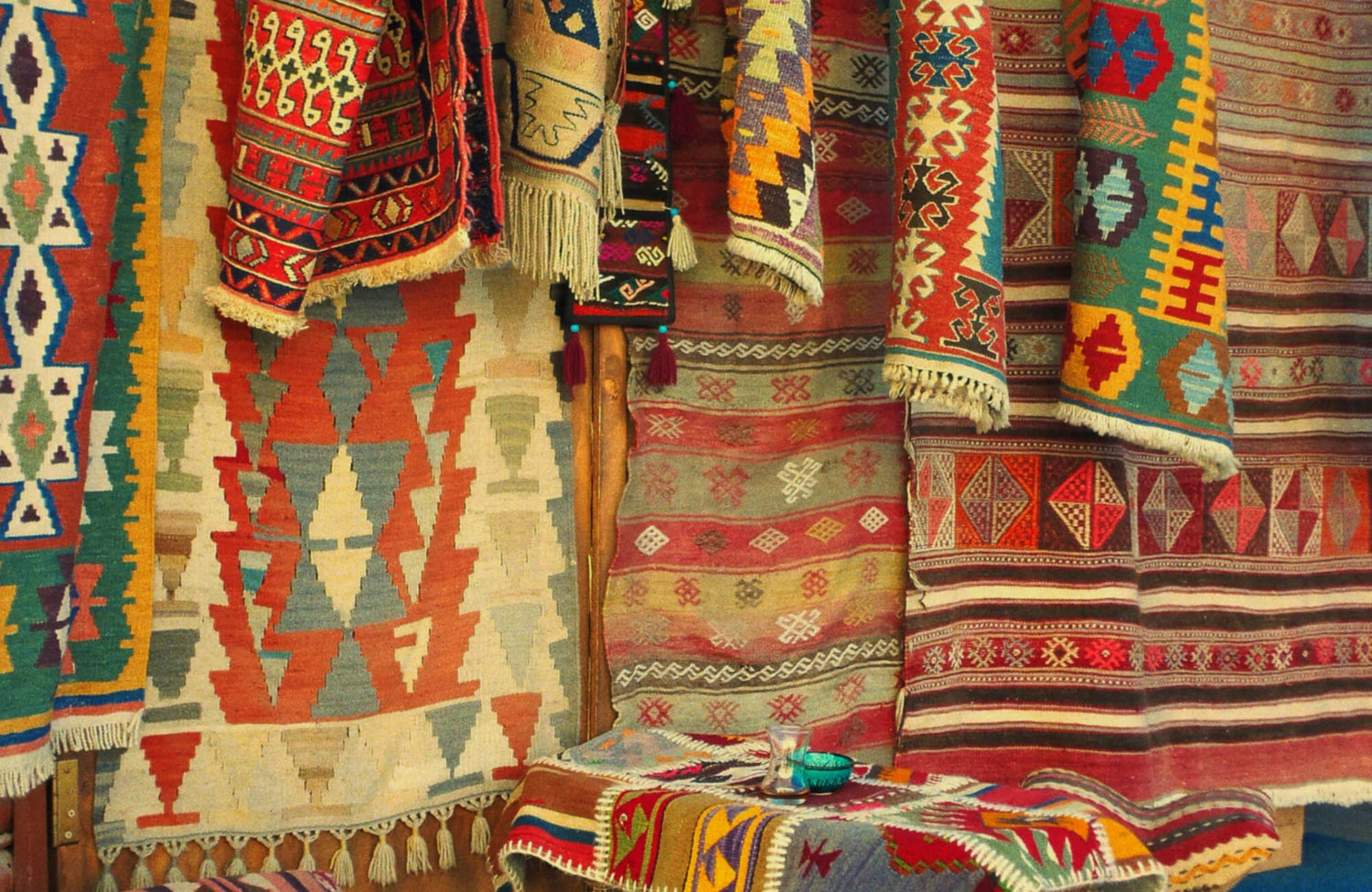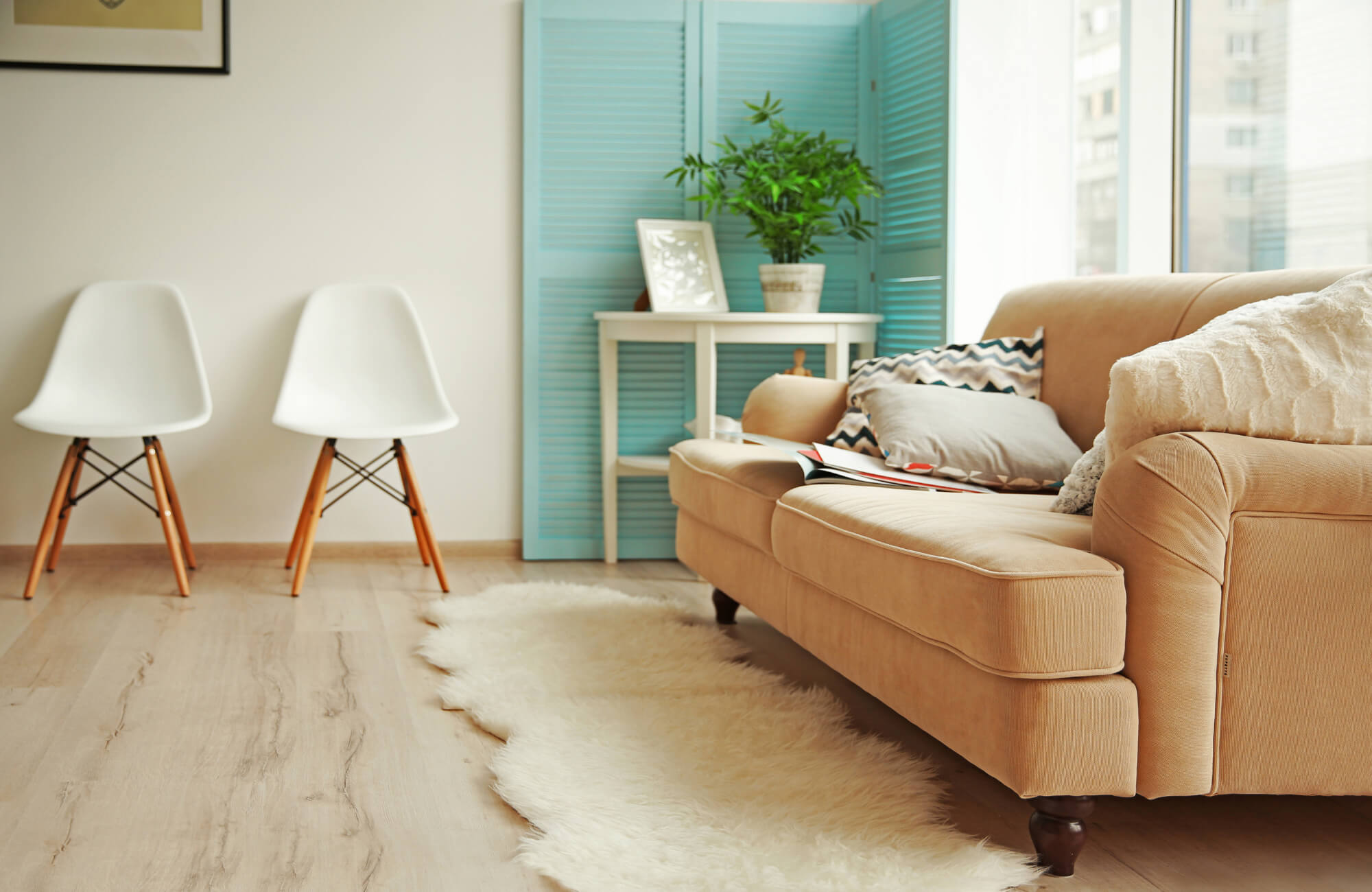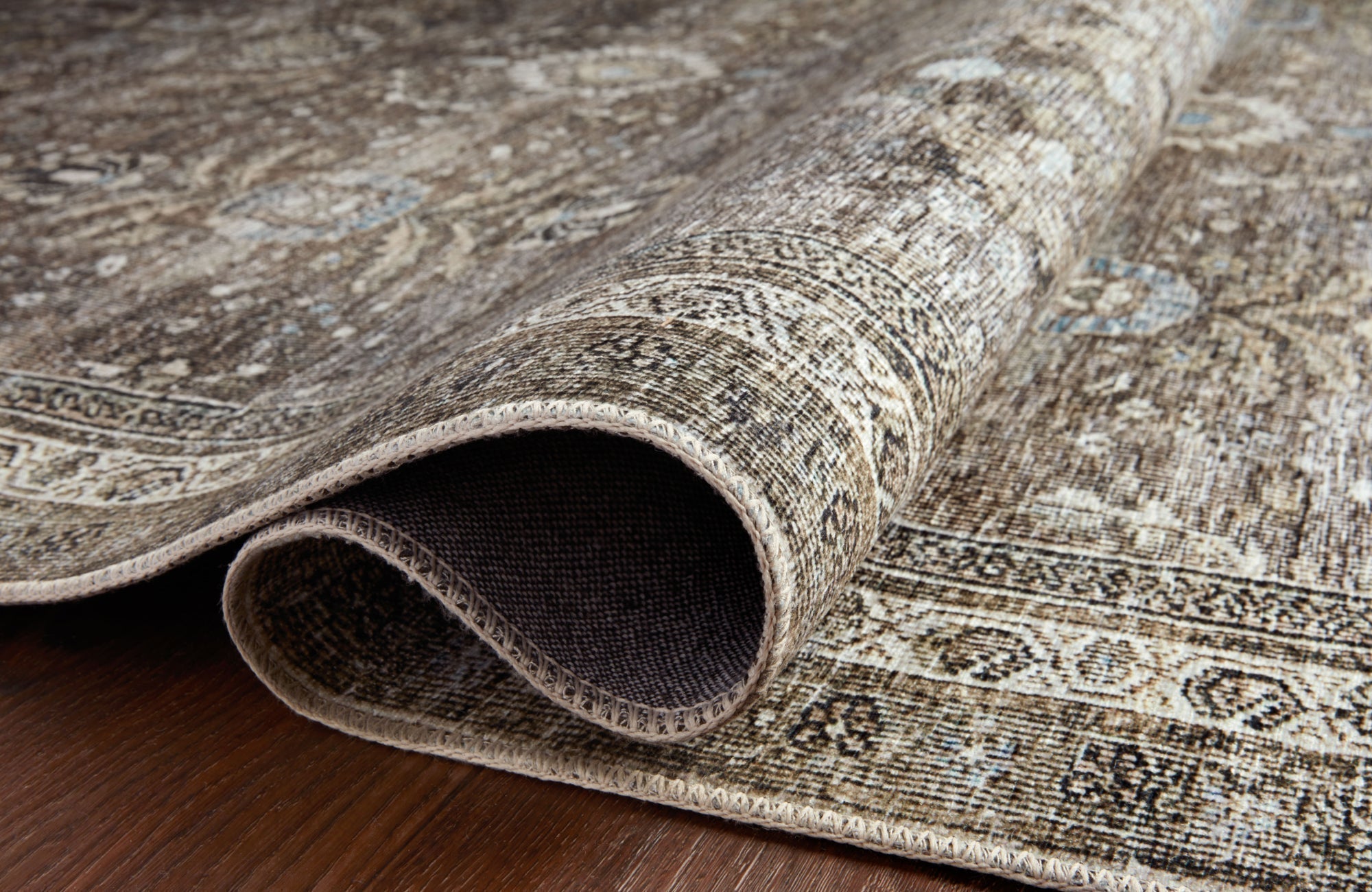When you lay down a rug, you're doing more than adding a decorative touch. You're anchoring the energy of the room, telling a story, and creating a sense of purpose within the space. Rugs have always been more than something soft beneath our feet. They are quiet storytellers, woven with tradition, identity, and emotion.
Over time, rugs have come to represent far more than comfort or style. From tribal motifs rich with symbolism to modern designs rooted in sustainability and craftsmanship, rugs speak to who we are and what we value. In the sections ahead, we examine six distinct perspectives that highlight the deeper significance of rugs, from cultural heritage and artistic expression to emotional resonance, spiritual value, ethical impact, and social symbolism. Together, they offer a more meaningful lens through which to understand and appreciate these enduring textiles.

Rugs as Cultural Narratives
Rugs have long served as more than functional floor coverings. They are vessels of meaning that carry the legacy of entire communities. Across continents and centuries, weaving has also been a form of communication, preserving identity through patterns, symbols, and craftsmanship.
Symbols in Traditional Motifs
Across the world, the symbols found in traditional rugs carry meanings passed down through generations. When you look closely at a Persian rug, for instance, you may notice stylized gardens or floral patterns that reference the Garden of Paradise, symbolizing eternal life and divine order. Turkish rugs, by contrast, frequently incorporate motifs like the evil eye or the hand of Fatima which icons are believed to ward off harm and protect the household. Meanwhile, Navajo weavings often reflect sacred landscapes, cosmic forces, or natural elements, grounding the design in a worldview that centers harmony with nature. Similarly, in Berber traditions, simple geometric shapes aren’t just aesthetic choices; they speak to lineage, tribe, and spiritual beliefs.
When you understand the intention behind these motifs, your relationship with a rug becomes more than surface-deep. You’re no longer selecting a piece simply for color or texture. Instead, you’re recognizing the visual storytelling embedded in its design, appreciating it not just as décor, but as a bearer of cultural memory and symbolism. This awareness also brings a greater sense of respect to the spaces you create and fosters a deeper connection with the people and traditions behind the piece.
Regional Identity Through Weaving Techniques
Distinct weaving techniques across regions reflect more than style; they offer insights into how people lived, adapted, and expressed themselves through material. In nomadic societies, such as those in Central Asia, kilims were preferred because they were lightweight and easy to transport. These flatwoven rugs became practical companions during seasonal migrations. In contrast, communities living in colder, mountainous regions like Tibetan or Moroccan weavers crafted thicker pile rugs that provided essential insulation. These differences speak to how environment and daily needs shape artistic form.
Materials also tell a regional story. For example, silk revered in Persian weaving symbolizes refinement and opulence. In contrast, wool, which is commonly used in Tibetan and Turkish designs, offers durability and warmth, suited to their often colder climates. Additionally, jute, widely used in India, reflects an emphasis on sustainability and local sourcing. When you choose a rug with a clear understanding of its materials and construction, you’re not just selecting a style; you’re embracing a specific culture’s relationship with its environment and way of life. As a result, this conscious choice turns your space into a meaningful celebration of global artistry and tradition.

Symbols of Status and Power
Throughout history, rugs have represented far more than comfort or decoration. They’ve long been used to communicate refinement, influence, and elevated social standing. From noble courts to modern interiors, the most prized rugs continue to reflect taste, distinction, and a connection to craftsmanship.
Historical Associations with Nobility
In royal courts and aristocratic homes, rugs once served as powerful visual cues of status. During the Renaissance, Persian rugs were so highly valued across Europe that they were rarely placed underfoot. Instead, these elaborate textiles were draped across walls, furniture, or tables, preserved and displayed like priceless works of art. This unconventional placement wasn't just for protection, it was also a deliberate statement.
Today, that tradition is far from forgotten. In contemporary interiors, high-end rugs are often used as wall hangings or focal pieces, echoing the grandeur of past centuries. Whether you’re layering a luxurious runner over a console or framing a silk piece on the wall, these gestures revive a timeless idea: that a rug can be more than just a furnishing, it can be a declaration of elevated taste.
Prestige Materials and Fine Craftsmanship
Some materials and techniques naturally carry an air of exclusivity, and rugs are no exception. Take silk, for example, a material historically reserved for nobility that, when used in rug-making, transforms the piece into something luminous and delicate. Similarly, hand-knotting, a labor-intensive method that can take months or even years to complete a single rug, further distinguishes these pieces as rare and valuable. When you run your hand over a hand-knotted silk rug dyed with natural pigments, you’re experiencing centuries of technique passed down through master artisans.
Other materials, such as mohair and alpaca, also contribute to a sense of quiet luxury. These fibers offer exceptional softness and sheen, often woven into bespoke pieces that are as tactile as they are beautiful. In some cases, metallic threads like gold or silver-wrapped silk are incorporated for added opulence, a detail once seen in royal or ceremonial textiles.
Choosing rugs made with these premium materials is not simply about aesthetics. It’s a form of appreciation for traditional craft and meticulous design. Each knot, fiber, and hue tells a story of patience and pride. By investing in such a piece, you're not only adding luxury to your space but also preserving a legacy. It’s a way to surround yourself with meaningful objects that hold their value and character, becoming heirlooms worth passing down.

Emotional Anchors in Interior Design
Rugs shape how you feel and move through your space. Their textures, colors, and placements influence mood and foster emotional connections, offering more than just aesthetic value.
Establishing Emotional Zones
In open-concept spaces or even in smaller rooms with multiple functions, rugs have a powerful way of creating distinct emotional zones. You might find that a plush rug under a favorite chair forms an intimate reading nook, while a flatwoven style in the dining area invites casual, lively meals and conversation. These differences in texture, pattern, and placement also help guide how each part of your home feels and how you interact with it. The living area in the photo above, for instance, demonstrates this principle with ease. Anchored by the Georgette Polyester Pile Rug in Navy Rose, the space feels unified yet emotionally inviting. The soft blend of blue and pink, a classic palette with timeless appeal grounds the room while subtly defining the seating area.
When you choose rugs with emotional intent, you begin to see your home not just as a layout, but as a layered experience. A serene corner can become a daily retreat with the right tactile surface beneath your feet. Meanwhile, a vibrant, geometric rug can inject momentum into a space meant for gatherings and connection. Over time, these emotional zones shape routines, restore balance and support the way you live.
Memory and Attachment
Unlike fleeting decorative trends, rugs often stay with you for years and sometimes for generations. As they accompany everyday moments, they start to absorb memory and significance. A rug chosen for your first apartment, or one placed in a child’s nursery, becomes woven into the backdrop of your life. These pieces also witness change, celebration, and sometimes even quiet grief, becoming silent companions that grow more meaningful with each passing moment.
When you select a rug to mark a life chapter whether it’s a new beginning, a meaningful trip, or a family celebration, you’re making more than a style choice. You’re anchoring a memory in a physical object, giving that space a deeper emotional weight. Each step across it can also evoke warmth, nostalgia, or pride, reinforcing the idea that rugs are not just objects underfoot; they’re personal landmarks woven into the story of your home.
If you’re looking for guidance in choosing a rug that truly reflects your story, our Design Services team is here to help you find the perfect piece—one that’s as lasting as the memories it represents.

Spiritual and Ritual Objects
Across many cultures, rugs serve as more than decorative pieces; they create sacred space and support spiritual practice. Their presence in rituals, meditative routines, and religious ceremonies lends them a quiet but profound symbolic weight.
Prayer Rugs and Sacred Textiles
Within Islamic tradition, prayer rugs known as sajjadah are deeply personal and sacred. Designed with symbolic motifs like the mihrab, or prayer niche, these rugs help orient you toward Mecca, setting both physical direction and spiritual intention. The intricate patterns also often reflect themes of paradise, divine light, and humility, offering a dedicated surface to pause and focus your energy during daily prayer.
However, these rugs are more than just beautiful textiles; they also carry deep expressions of faith. When you encounter or display them in your home, it's essential to recognize their spiritual significance. Using such sacred pieces as décor without understanding their intended purpose can come across as careless or disrespectful. If you're drawn to their design, consider learning about their context or choosing symbolic textiles that reflect your own spiritual path.
Ritual Spaces and Intentional Placement
In practices like yoga, meditation, and ancestral rituals, rugs often define and elevate a space meant for inner work. Whether placed in a quiet corner or the heart of a room, their texture and warmth invite you to slow down, breathe deeply, and transition into a more mindful state. The surface itself also becomes a cue, reminding you that this is a space for intention and presence, distinct from the distractions of everyday life.
As you build personal rituals whether lighting incense, practicing breathwork, or reflecting in silence, the rug beneath you becomes more than a foundation. It absorbs the energy of your practice and can evolve into a spiritual companion. By choosing a rug with personal meaning or a design that encourages peace, you can also deepen your connection to the present moment and give your spiritual routines a grounded, tangible home.

Mediums of Artistic Expression
Rugs are canvases for artistic exploration. In both traditional and contemporary designs, they bring texture, color theory, and visual rhythm to life. Whether you're drawn to bold patterns or subtle abstractions, rugs can act as expressive focal points that define your space.
Artistry in Composition and Color
When you look closely at the intricacies of a well-designed rug, you're not just seeing patterns, but you’re also experiencing visual storytelling through artistic technique. Much like in painting or sculpture, rug design depends on balance, proportion, and the thoughtful use of space. For example, symmetry can offer a sense of calm and order, while asymmetry may introduce energy and spontaneity. Every line and motif serves a purpose in guiding the eye, often encouraging interpretation in the same way a piece of modern art might.
What makes this medium especially compelling is its ability to respond to and transform its environment. In minimalist interiors, for instance, a vibrant or intricate rug can instantly become the focal point, injecting movement and personality into an otherwise subdued space. Conversely, rugs with softer, more harmonious compositions can quietly complement the room’s aesthetic without overwhelming it.
A perfect example is the space shown in the photo above, where the Hutchinson Polyester Face Rug in Burgundy / Khaki, a vintage-inspired rug, grounds the room with subtle elegance. Its soft terracotta tone and faded pattern also add texture and depth while allowing the natural light and earthy palette to shine.
Collaboration Between Artists and Weavers
In recent years, the line between art and rug design has blurred even further. As a result, contemporary artists are increasingly teaming up with skilled weavers to transform original works of art into woven forms. Unlike mass-produced reproductions, these collaborations are intentional reinterpretations, often handcrafted and limited in number. The resulting pieces are also entirely unique, sometimes signed by the artist, and frequently carry the same emotional and monetary value as framed artwork.
What truly sets these collaborations apart is their ability to merge artistic vision with technical mastery. On one hand, artists contribute bold ideas, distinctive color palettes, and experimental compositions. On the other, weavers bring a deep understanding of texture, rhythm, and material. Together, they create rugs that tell layered stories where the tactile meets the visual, and functionality blends seamlessly with artistic expression. For those seeking a piece that sparks conversation and adds depth to a space, these collaborative rugs offer the ideal fusion of creativity and craftsmanship.

Symbols of Sustainability and Ethical Values
As consumers grow more eco-conscious, rugs have become statements of environmental and social ethics. The materials you choose and the origins of your rug can signal your commitment to sustainability, mindful living, and global responsibility.
Eco-Conscious Material Choices
When you opt for natural or recycled fibers like jute, wool, or organic cotton, you’re making a tangible shift toward environmentally sound living. These materials are biodegradable, renewable, and often produced without the harsh chemical treatments found in synthetic alternatives. Wool, for instance, is naturally stain-resistant and insulating, while jute thrives with minimal water and pesticide use, making it a low-impact crop. Similarly, cotton, especially when recycled or responsibly farmed, offers softness without compromising your values.
A great example of this mindful material choice is the Mallory Wool Pile Rug in Khaki, shown in the image above. Crafted from 100% wool, this rug blends softness with durability and showcases a warm, earthy tan tone that complements both modern and traditional spaces. Its understated design and natural fiber construction also make it a perfect addition for those seeking comfort, longevity, and eco-conscious style in one piece.
Equally important, certifications play a critical role in helping you identify rugs that meet ethical and sustainable standards. Labels like GoodWeave ensure that no child labor is used in production, while OEKO-TEX verifies that the rug is free from harmful substances. By combining mindful material choices with certified ethical practices, you’re not only protecting the environment but also creating a healthier space.
Social Impact Through Artisan Support
Beyond materials, the hands that weave your rug matter just as much. When you purchase rugs crafted by artisan communities, especially in regions where rug-making is a longstanding tradition, you actively support livelihoods and cultural preservation. These rugs often carry techniques passed down through generations, methods that are at risk of disappearing in the face of mass production. Choosing a handcrafted piece also sustains those lineages and promotes fair wages in areas where economic opportunities may be scarce.
This personal connection adds something irreplaceable to your space. Knowing who made your rug and the cultural or personal story it tells transforms it from an object into something meaningful. It's no longer just about design or color but about participating in a broader narrative of dignity, craftsmanship, and care. In this way, your rug also becomes a symbol of integrity, bridging your values with the global communities you help uplift.
Rugs as Living Narratives
A rug is never just a surface—it’s a story quietly unfolding beneath your feet. Whether it echoes the voice of a distant culture, captures the memory of a meaningful moment, or reflects a commitment to intentional living, it carries more than visual appeal. As time passes, it becomes layered with meaning, evolving into something far deeper than decoration. In this way, rugs serve as emotional and visual anchors, grounding your space with purpose, identity, and memory. Just as each thread reveals the hand of the maker, it also speaks to your values and the life you’re creating. When you choose a rug with intention, you’re not simply styling a room; you’re shaping a narrative that honors where you’ve been, reflects who you are, and supports how you want to live.
Finding a rug that reflects your story doesn’t have to be overwhelming. Whether you're drawn to cultural depth, meaningful craftsmanship, or timeless design, we’re here to guide you every step of the way. Contact us to explore pieces that align with your values and bring lasting meaning to your space.







